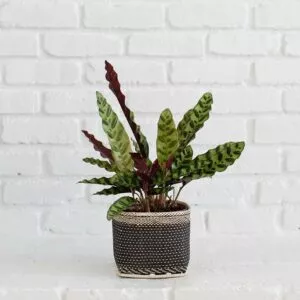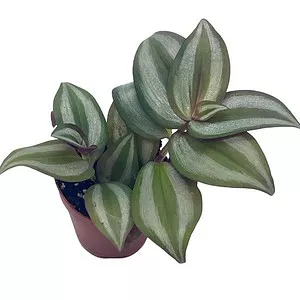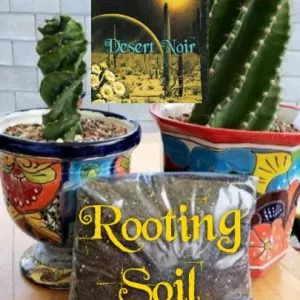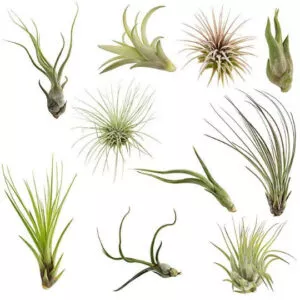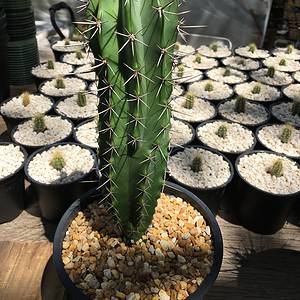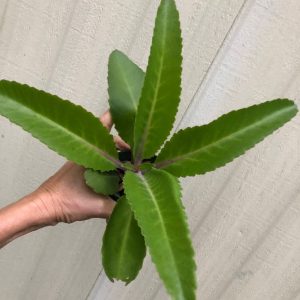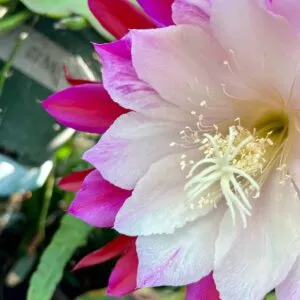No products in the cart.
Table of Contents
Yes, it is that time of the year when Plantly is celebrating women worldwide. Women’s History Month is from 1 March to 31 March.
It is the time of the year when America recognizes women who make a difference in many women’s lives to promote hope for others.
Many women over the years have brought new women’s rights throughout history in the fields they worked.
But today, as we love plants, we want to honor women botanists this March who have enormously succeeded in the world, bringing nature to our homes and gardens.
But before honoring women in history, knowing where it all started is just as important. It helps to understand why Women’s History Month is so important.
How Celebrating Women All Started

The first-ever Women’s History Week celebration occurred in SantaRosa, California, in March 1978.
It happened to make more women aware of their contribution to society. Moreover, the week corresponded with International Women’s Day on 8 March.
Over several years, more cities joined in honoring women. Finally, U.S. President Jimmy Carter 1980 declared the week of 8 March a National Women’s History Week.
He urged all U.S. residents to honor you and old as they go unnoticed. The week-long event became a month-long event in 1987 when Congress passed the resolution that March would now be Women’s History Month.
So, this year, we will honor some female botanists you might have never known who achieved success in their lives.
These women in history have also allowed other women to become botanists.
National Women’s History Months-Famous Women Botanists

Women’s History Month @flickr
We all know the importance of plants in our lives. Plants provide us with food, are vital ingredients in medicine, and filter our polluted air, making breathing easier.
So, to use them in our home or garden, we need to understand and identify them. For this reason, our Women’s History Month celebration is for some crucial women botanists.
The truth is that some of the most innovative botanists were all women. Here are six impactful female botanists who pioneered plant research.
Maria Sibylla Merian (1647-1717)
Regarding achievements, Maria Sibylla Merian must be on this list to recognize women for March. She provided groundbreaking scientific images of the relationship between insects and plants. The illustrations influenced many upcoming naturalists and scientists.
Maria is German-born and received artistic training from Jacob Marrel, her stepfather. He was a student of Georg Flegel, a still-life painter. While Maria’s main interest was entomology, she identified many plant species necessary for insects as their food and habitat.
You can find her depiction of host plants and insects in popular books like:
The Caterpillars’ Marvelous Transformation and Strange Floral Food ( 1679)
The Metamorphosis of the Insects of Suriname (1705)
Her work is remarkable for the time as she documented the biological processes of reproduction usually done by men at that time.
In stock In stock In stock In stock
$40.00
Sold By:
NEEPA HUT
6″ Rattlesnake Calathea indoor plant + Charcoal Planter Basket
Only 4 available and it’s in 2 people’s basket Rated 4.99 out of 5 based on 221 customer ratings11
Sold By:
NEEPA HUT
$5.99
Sold By:
BubbleBlooms
Wandering jew, Tradescantia zebrina Bosse
Only 27 available and it’s in 5 people’s basket Rated 4.81 out of 5 based on 279 customer ratings01
Sold By:
BubbleBlooms
$6.00
Sold By:
Smoot's Farm
Succulent Gasteraloe Flow 2″ Pot Live Plant
Rated 4.89 out of 5 based on 27 customer ratings00
Sold By:
Smoot's Farm
Free Shipping
$13.99 – $24.99
Sold By:
Desert Noir
Rooting Soil, Desert Noir, proprietary blend, cactus, propagation, succulents
Rated 4.99 out of 5 based on 234 customer ratings04
Sold By:
Desert Noir
Jeanne Baret (1740 – 1807)
Another woman worth mentioning this National Women’s History Month is Jeanne Baret. She was a fascinating botanist who became the first woman to orbit the globe in 1769. She collected unknown European plant specimens on her way disguised as a man.
She was born a peasant in France in the historical Burgundy region. Her botany knowledge stemmed from working with a herbalist. It drew the attention of botanist Philibert Commercon.
Jeanne worked for him as a housekeeper and was likely romantically involved with him. So when Philibert was invited to an expedition, the pair decided she would go with him dressed as a man.
She helped collect over 6,000 plant specimens on that voyage and led field expeditions when Philibert was not around. She deserves credit in her country for finding the Bougainvillea brasiliensis. It is a pink flowering vine from South America.
Her true identity was discovered two years later, but luckily, she was not persecuted. She made women’s history as her accomplishments became recognized 200 years after she died in 2012. The country named the South American Solanum baretiae in honor of her.
Agnes Arber (1879 – 1960)
Agnes Arber was the first woman botanist elected as a Fellow of the 1946 Royal Society. Agnes was a plant morphologist and historian and the daughter of a London art instructor—her interest in plants and doing scientific illustrations developed after meeting Ethel Sargant.
Ethel is another well-known plant morphologist. During Agnes’ time as a student at the University College in London, she spent years working as Ethel’s assistant. You can still see her achievements today as she has published many research papers and books on botany.
There are two books on the morphology of water plants and grasses found in the Gramineae family. Furthermore, she promoted hope for women at that time and released several publications on the philosophy and history of botany.
She has a well-known book on the evolution of herbs and was awarded the Gold Medal of the Linnean Society of London in 1948. So, we celebrate Agnes for the entire month as she was the first woman ever to receive such an award.
Janaki Ammal (1897 – 1984)
Women’s History Month can not be celebrated without India’s most notable scientist Janaki Ammal. She is known to explore sugarcane and worked on cross-breeding that produced the sweetest sugarcane specimens in the world.
She was one of 19 children and, as a woman of those times, was expected to marry through an arranged marriage. During this time, literacy among women in India was far less than 1%. But she created a movement and attended college, receiving a doctorate in botany at the University of Michigan.
With her expertise in studying the genetic composition of plants (cytology), she developed a new sugarcane crop, allowing India to stop importing sugar from other countries. It bolstered the country’s economic independence.
Ammal worked alongside the best scientists at the Royal Horticulture Society in the U.K. She was responsible for restructuring the Indian botanical survey. While known for cytology, she was a staunch environmental activist who used her status to protect 100s of acres of tropical forests in Kerala, India.
She is one lady promoting hope throughout history for other women in her country.
Ynés Mexía (1870 – 1938)
Another female botanist that deserves mentioning in making women’s history is Ynés Mexía. She is one of the 21st century’s most renowned botanical specimen collectors. Yet, she only started studying botany at 50. That is pretty amazing!
Ynés was the daughter of a Mexican diplomat who lived in Mexico and the USA. She settled in California and became fascinated with the wild landscape. After working as a social worker, she took botany and science classes at UC Berkeley and explored the West with a sampling expedition.
She has traveled solo field trips to Mexico and South America to explore remote wildernesses. She collected over 150,000 plant samples with her expeditions. Yet, her work was cut short; she died in 1938 from lung cancer.
Still, with her short career and movement in botany, she achieved many achievements, leaving a legacy for many women. Many of her plant specimens are still analyzed by researchers worldwide today.
The news is that she most likely found 50 new plant species with two new genera. One of them is the Mexianthus. It is a group of Mexican plants belonging to the sunflower family named after her.
She will always be remembered in botany history throughout March by this gorgeous flower.
-
Free Shipping$156.04Sold By: BONSAI WORLD LLC
Only 1 left in stock
Ficus Kaneshiro Bonsai Tree (ficus microcarpa ‘kaneshiro’)
Only 1 available and it’s in 1 people’s basketSold By: BONSAI WORLD LLC -
$45.00Sold By: Beauties & Beasts
$50.00In stock
Ceramic Planters- Rae Dunn by Magenta Stem Print- Set of 2
Rated 4.83 out of 5 based on 24 customer ratings00Sold By: Beauties & Beasts -
Free Shipping$18.95Sold By: CTS Air Plants
In stock
Air Plants Tillandsia Collection of 10 Easy Houseplants
Only 100 available and it’s in 2 people’s basketSold By: CTS Air Plants -
Katherine Esau (1898 – 1997)
Another Women’s History Month botanist worth mentioning is Katherine Esau. The Russian-born botanists did pioneering research and received many achievements in plant history.
While she might not have fought for women’s rights, she laid the foundation for the modern study of plant structure and the cell function of plants. Today, her achievements continue to influence botany students.
She was interested in exploring agriculture, first studying in Moscow, then in Berlin. When her family immigrated to the USA, Esau received her doctorate at the University of California at Berkeley.
During her first movement in the botany career, she focussed most of her time researching hybridization to viruses in food crops. Later, she concentrated her time on plant anatomy and light-microscope studies.
As time progressed and technology advanced, a significant subject of her research was phloem. It is a food-conducting tissue found in plants. She published a popular textbook, Plant Anatomy, during her botany movement in 1953.
The textbook, until today, remains a classic in the field of botany history. Later, Esau became a professor emerita at Santa Barbara’s University of California in 1989. She was awarded the National Medal of Science for her work.
It made her the first woman in history to receive this accolade. Today, botanists still recognize her work and are worthy contenders for making national women’s history in botany.
Whether you want to buy, sell, or simply reach out to other plant enthusiasts, Plantly is the right place to be!
-
$15.99Sold By: BubbleBlooms
In stock
Philodendron Birkin, 4 inch, White Wave, Mermaid’s Tail
Only 93 available and it’s in 1 people’s basketRated 4.81 out of 5 based on 279 customer ratings01Sold By: BubbleBlooms -
$12.95Sold By: SunSoul Plants
In stock
LIVE kalanchoe suarezensis plant potted with soil in 3″ pot
Only 1 available and it’s in 1 people’s basketRated 4.87 out of 5 based on 98 customer ratings00Sold By: SunSoul Plants -
$9.99Sold By: Succulent Oasis
In stock
Small Cactus Plant Old Man of the Andes.
Only 7 available and it’s in 1 people’s basketRated 4.84 out of 5 based on 352 customer ratings00Sold By: Succulent Oasis -
$35.00Sold By: That Wild Yard
In stock
Clown Epiphyllum Plant, Orchid Cactus
Sold By: That Wild Yard
